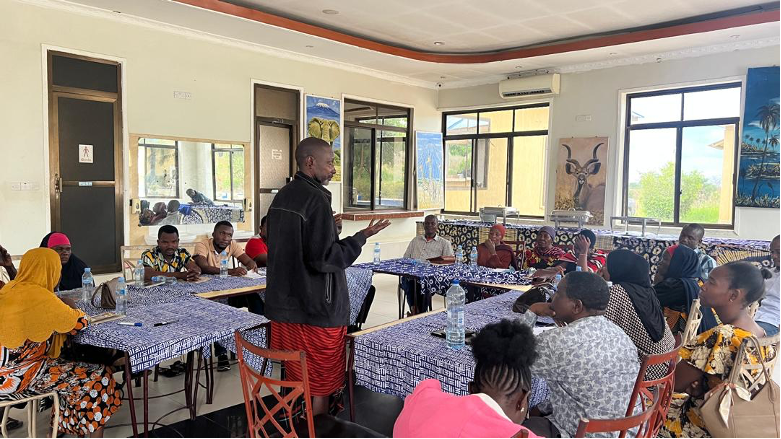
During the March–May (MAM) 2025 season, indigenous forecasters in Bagamoyo, Chalinze, Lushoto, and Pangani shared seasonal predictions based on environmental indicators observed in their surroundings. These forecasts were refined through bi-weekly meetings within the four districts. In parallel, TMA released its scientific MAM 2025 outlook, complemented by 10-day and monthly forecasts that guide agricultural planning and climate preparedness.
The workshop provided a unique platform to compare, integrate, and learn from both knowledge systems. Discussions revealed key similarities as well as differences between indigenous and scientific forecasts, highlighting the potential for synergy.
This exchange not only strengthened collaboration between local communities and National scientists but also demonstrated how blending indigenous knowledge with scientific methods can improve the accuracy, ownership, and usefulness of climate services at the community level.
The IK team in Bagamoyo district forecast anticipated the onset of the MAM 2025 rains in the first week of March (around 2 March 2025), with planting recommended during the second week of March. In reality, most crops were planted in the third week of March (from 12 March 2025), and harvesting commenced in the second week of June, yielding good harvests across several crops. The rains ended around 14 June 2025, consistent with the forecasted period.
Tanzania Meteorological Authority (TMA) Forecast
TMA’s seasonal forecast projected rainfall to start between the first and second week of March, continuing until the third to fourth week of May, with total rainfall ranging from 430 mm to 610 mm, categorized as normal to below normal. Peak rainfall was expected in April 2025, with a likelihood of dry spells lasting 10 days or more during the season.
Observed Performance in Bagamoyo District.
Field assessments indicated that rainfall in Bagamoyo District began in the second week of March and extended into the second week of June, slightly later and longer than TMA’s forecast window. Measured rainfall amounts ranged between 300 mm and 500 mm, broadly aligning with the lower end of TMA’s projections. Northern and northwestern parts of the district experienced above-average rainfall, while most areas received near-average levels.
Comparison and Integration
- Both IK and TMA forecasts correctly anticipated the onset in early March and highlighted the importance of March planting, which matched the actual observed planting window.
- IK indicated the season would extend into June, which was confirmed by the observed end date (14 June 2025), whereas TMA had suggested an earlier end in late May.
- Both forecasts noted variability, with TMA emphasizing possible dry spells and IK identifying traditional indicators for shifts in rainfall.
- Agricultural outcomes were generally positive, with good harvests recorded, suggesting that both forecasting approaches provided valuable guidance for local farmers.
The integration of IK and TMA forecasts during the 2025 MAM season proved beneficial, as both provided complementary insights. The alignment of planting recommendations with rainfall onset contributed to good yields, while the comparison of outlooks with observed data strengthened community confidence in blended forecasting approaches for future agricultural planning.
